Stay Informed
Popular Articles
- Hiatal Hernia: Hidden Cause of Chronic Illness
- Small Intestinal Bacterial Overgrowth (SIBO)
- Applied Lymphology: Unlocking the Secret to Pain Relief
- An Introduction to Constitutional Iridology
- The Low Down on Liver Detoxification
- An Energetic and Emotional Approach to Cancer
- Fat Facts
- Marrow in the Bones
- Blood Type and Nutrition
- Cardiac Herbs: Beyond Hawthorn
Quick Search
The School of Modern Herbal Medicine




How I Learned to Breathe Freely
- 4/5/2008
- Categorized in: Specific Health Problems
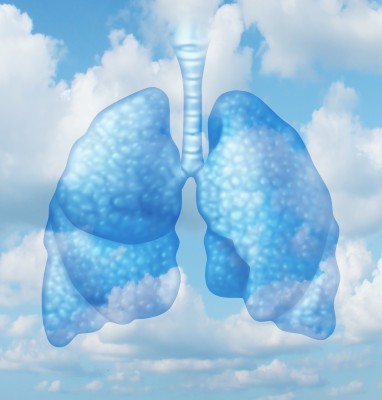 When I first thought of writing this article, I thought of calling it “True Confessions of a Mouth Breather,” because it made me think of those True Confession stories that get published in magazines. Okay, so maybe it's not any shocking self-revelation like a guest on the Jerry Springer show, but it is a topic that causes me to dredge up a lot of painful memories that I've put far behind me. Still, for all those who struggle with various respiratory ailments, I think my story holds hope. There are permanent solutions to respiratory problems that don't involve medical band-aids that only deal with symptoms. So, with that understanding I will tell you of my personal struggle to learn to breathe freely.
When I first thought of writing this article, I thought of calling it “True Confessions of a Mouth Breather,” because it made me think of those True Confession stories that get published in magazines. Okay, so maybe it's not any shocking self-revelation like a guest on the Jerry Springer show, but it is a topic that causes me to dredge up a lot of painful memories that I've put far behind me. Still, for all those who struggle with various respiratory ailments, I think my story holds hope. There are permanent solutions to respiratory problems that don't involve medical band-aids that only deal with symptoms. So, with that understanding I will tell you of my personal struggle to learn to breathe freely.
Throughout my childhood and teenage years, I was chronically congested, with my mouth constantly hanging open so I could breathe. Unfortunately, it was one of the many factors that contributed to my high nerd quotient. The glasses I wore (and the fact that I actually had a pocket protector at one time) didn't help, either.
 And while it's no shocking revelation, as a child it was emotionally painful to be so sickly. My parents were always trying to get me to close my mouth, but I really couldn't, because if I did, I couldn't breathe. The picture on the right below shows me reading with my mouth open as it usually was.
And while it's no shocking revelation, as a child it was emotionally painful to be so sickly. My parents were always trying to get me to close my mouth, but I really couldn't, because if I did, I couldn't breathe. The picture on the right below shows me reading with my mouth open as it usually was.
Not only were my sinuses constantly plugged up, I had constant post-nasal drip and I “caught” colds very easily. When I would get sick, which was several times a year, it would take me two to three weeks to recover.
One of the reasons it was so painful was that my problems with breathing interfered with my ability to participate in physical sports. I couldn't run very fast because I would start to cough and choke on the phlegm in my lungs. As a result, I came in last (behind all the girls) when we had to run in elementary school. That wasn't just embarrassing, it was humiliating.
Medical Treatments Didn't Help
My mother dutifully took me to the doctor every time I got sick. Dr. Lyman Merrill Horne, a distant relative, was a good old-fashioned doctor who, knowing our family was not very well off, often accepted a loaf or two of my mother's homemade whole wheat bread in exchange for his services. He gave me antibiotics (penicillin) each time I got sick.
When I was 13, he diagnosed me with chronic sinusitis, and put me on daily doses of penicillin for two years. Although I didn't get sick as often, at the end of the two years my sinuses were more plugged than ever. So, he referred my parents to a specialist: an ear, nose and throat doctor. The specialist said I had a deviated septum and that my sinus passages were too narrow. He recommended surgery to scrape the cartilage out of my nose and widen my sinus passages.
So, at age 16, I went to the hospital and had the operation. It appeared to work. For a few weeks I could actually breathe through my nose, until my sinuses started plugging up again. Now, because I was supposed to be able to breathe through my nose, I got even more criticism from my parents when my mouth was hanging open. But, the fact was, that I still couldn't breathe properly through my nose 90% of the time.
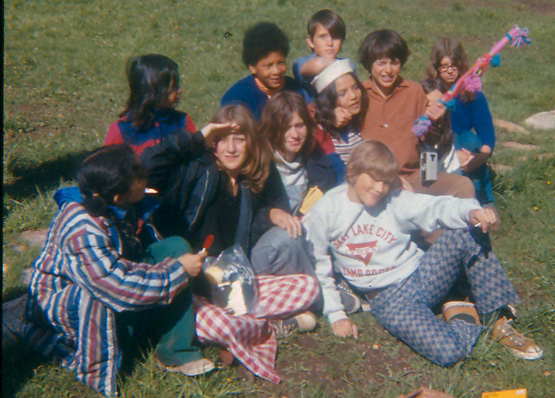 The summer I turned 19, I was working as a camp counselor for the YMCA. The picture on the left is one of the groups of kids I worked with during that summer. I enjoyed working as a camp counselor, but I got sick early in the summer and was given another round of antibiotics. As soon as I finished it, I got sick again, only worse. This time, Dr. Horne not only gave me a stronger antibiotic, he also gave me a couple of shots of gama globulin (to boost my immune system) and a B-Complex and C vitamin supplement which he said would help me deal with stress. He wanted me to be healthy enough to go on a mission for my church.
The summer I turned 19, I was working as a camp counselor for the YMCA. The picture on the left is one of the groups of kids I worked with during that summer. I enjoyed working as a camp counselor, but I got sick early in the summer and was given another round of antibiotics. As soon as I finished it, I got sick again, only worse. This time, Dr. Horne not only gave me a stronger antibiotic, he also gave me a couple of shots of gama globulin (to boost my immune system) and a B-Complex and C vitamin supplement which he said would help me deal with stress. He wanted me to be healthy enough to go on a mission for my church.
I felt better for about two months. I was sent on a mission for my church to smog-filled Southern California and about two weeks after I got there, my sinuses started flaring up. For the next six months, I was constantly struggling with sinus congestion, sinus headaches, sore throats (from post nasal drip) and wheezing. Then, I developed “walking pneumonia.” The doctor gave me oral antibiotics, which I took for a week while resting in bed. After a week I showed no sign of improvement, so he had me come into his office daily for shots of tetracycline. He also gave me ampicillin orally.
When I was better, one week later, he wrote a prescription for an antihistamine. Taking the antihistamine, I was able to breathe, but it also constipated me, so that I would go without a bowel movement for a week. I decided that wasn't good, and quit taking it.
I was ready for a change.
The Start of My Healing Process
 Several things happened within a couple of months. First, I decided, on my own, that I should eat healthier. I made a decision that natural, whole foods were better than processed ones and shifted my diet accordingly. At the same time, I found a health food store and saw boxes of herbal teas. Many of these plants were plants I knew the medicinal uses of because of my studies in outdoor survival as a teenager. I decided that maybe these medicines weren't just emergency backup for when there was no doctor. Maybe God made better medicines than man, and I ought to try some. So I did. They tasted horrible to me, but I drank them anyway.
Several things happened within a couple of months. First, I decided, on my own, that I should eat healthier. I made a decision that natural, whole foods were better than processed ones and shifted my diet accordingly. At the same time, I found a health food store and saw boxes of herbal teas. Many of these plants were plants I knew the medicinal uses of because of my studies in outdoor survival as a teenager. I decided that maybe these medicines weren't just emergency backup for when there was no doctor. Maybe God made better medicines than man, and I ought to try some. So I did. They tasted horrible to me, but I drank them anyway.
Around the same time, I also found a chiropractor who belonged to the same church as myself, and because I was on a mission, he offered to treat me for free. He encouraged me in my dietary changes and gave me additional tips, one of which was to cut out milk and dairy products, which I did.
As a result, I began to find relief for the first time in my life, although I still wasn't 100% well. It wasn't until years later that I found the secrets that would enable me to truly start breathing freely.
Cleansing the Colon
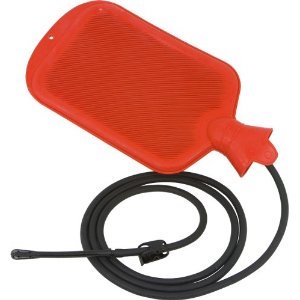 The first secret I discovered that really made a difference was colon cleansing. After my mission, while I was in college, someone gave me a copy of Back to Eden by Jethro Kloss. He suggested enemas for sinus problems, which I tried, and found they really helped. Many modern herbalists don't use enemas, but I have found them to be very helpful in detoxifying the body.
The first secret I discovered that really made a difference was colon cleansing. After my mission, while I was in college, someone gave me a copy of Back to Eden by Jethro Kloss. He suggested enemas for sinus problems, which I tried, and found they really helped. Many modern herbalists don't use enemas, but I have found them to be very helpful in detoxifying the body.
Later, I learned how to do a colon cleanse with fiber and herbs. The first cleanse I designed for myself was during my first year working for Nature's Sunshine products. I took 2 capsules of All Cell Detox three times each day and Psyllium Hulls combination twice daily in juice. I've written a book on cleansing called Coming Clean: Your Guide to Detoxifying the Body, which is available from Tree of Light Publishing.
At first, I passed this dark ropey stuff, which I later learned was toxic material from the liver, released through the gallbladder and bound to the fiber I was taking. After a while this material cleared away and my stools became a uniform light brown color and soft. At this point I started passing strings of mucus, which I believe are debris dumped from the congested lymphatic system. Once the mucus cleared away my sinuses opened up completely for the first time in my life.
The process took about three months, but it was worth it. Not only were my sinuses clear, I had more energy than I'd ever had.
Fixing my Hiatal Hernia
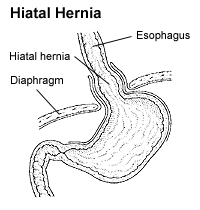 However, just because my sinuses weren't plugged doesn't mean that I was breathing freely. I had to be very careful about what I ate, as animal proteins, dairy products and even some grain products could start my sinuses plugging up very quickly. A couple of years later, Jack Ritchason taught me about the hiatal hernia, pulled my stomach away from my diaphragm, closed my ileocecal valve and taught me how to work on this myself. I've posted an article on this website about the hiatal hernia called Hiatal Hernia: Hidden Cause of Chronic Illness if you would like to read more about this subject.
However, just because my sinuses weren't plugged doesn't mean that I was breathing freely. I had to be very careful about what I ate, as animal proteins, dairy products and even some grain products could start my sinuses plugging up very quickly. A couple of years later, Jack Ritchason taught me about the hiatal hernia, pulled my stomach away from my diaphragm, closed my ileocecal valve and taught me how to work on this myself. I've posted an article on this website about the hiatal hernia called Hiatal Hernia: Hidden Cause of Chronic Illness if you would like to read more about this subject.
The effect was amazing! My digestion improved dramatically overnight and I was able to eat heavier foods without becoming congested. Now I understood that most colon problems arise from digestive problems. If food isn't digested properly, it toxifies the intestinal tract, which congests the lymphatics, which in turn, causes chronic respiratory congestion. I was working my way upstream towards the real source of the problem.
The most amazing thing about moving the stomach away from the diaphragm was that I could breathe more freely than I had ever been able to breathe in my entire life. For those of you who aren't familiar with this problem, the diaphragm is a large muscle that separates the chest cavity from the abdominal cavity. The diaphragm moves downward to inflate the lungs, and moves upward to expel air from the lungs.
There is an opening in the diaphragm that the esophagus passes through. The stomach can slide up into that opening, which inhibits movement of the diaphragm. The person winds up breathing using their chest muscles instead of their diaphragm. This limits the amount of oxygen they can get into their body. It also impedes lymphatic flow. There are other spin-offs of this problem, too. Since the vagus nerve comes down through the same opening, this will stress the vagus nerve and cause chronic digestive problems. It also puts pressure on the heart, and can cause rapid heartbeat.
Jack Ritchason told me that he'd never seen a chronically ill person who didn't have this problem. So far, neither have I. In other words, in my experience, all people who are chronically ill are shallow breathers. Learning to breathe deeply is also one of the most useful therapies for chronic pain relief.
After Jack taught me how to work on my stomach, I could breathe from my diaphragm and could comfortably do a four second inhalation followed by a four second exhalation. However, there was more to come in my journey to understand how to breathe freely.
A Deeper Healing
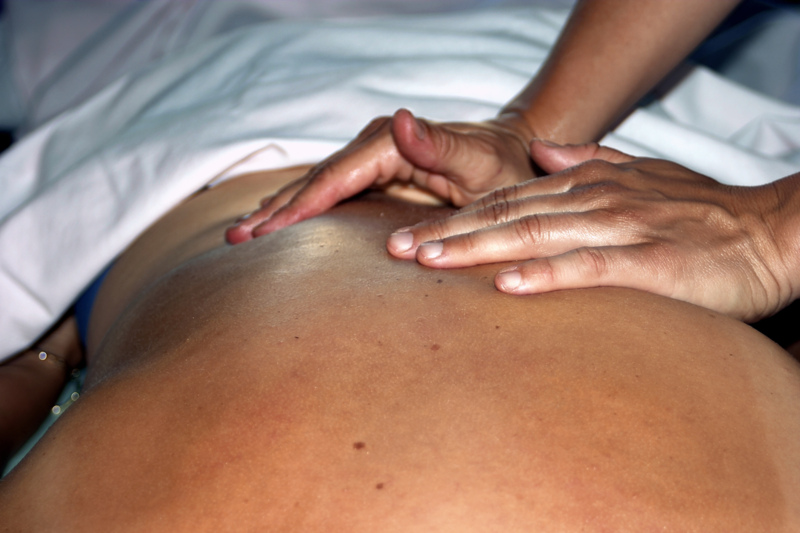 In about 1987, a Rolfer offered to give me some sessions. I've never been a fan of deep tissue work (I like my massages to be relaxing), but I agreed to some sessions. I could see they really made a difference. The process was painful, but not unbearably so until he started to work on my abdomen.
In about 1987, a Rolfer offered to give me some sessions. I've never been a fan of deep tissue work (I like my massages to be relaxing), but I agreed to some sessions. I could see they really made a difference. The process was painful, but not unbearably so until he started to work on my abdomen.
The pain was excruciating, but I also felt like I was being choked and I couldn't breathe. However, after the session was over, my breathing was freer than it had ever been before. Prior to this, I could get my stomach to move up and down as I breathed (a sign of diaphragmatic breathing), but my abdomen and chest were disconnected. Now, I was breathing in a new way, with my stomach and chest moving smoothly in sync with each other. After this I could also sustain a seven second inhalation and exhalation.
What we figured had happened was that my body had relived the trauma of my birth. The umbilical cord was wrapped around my neck three times, and according to my mother, it was only Dr. Horne's skill in delivering babies that had allowed me to survive. So, from birth, my body had carried the tissue trauma that said: “It's difficult to breathe.”
Lessons from the Bowen Technique
I recently learned about the Bowen technique, a very gentle, but powerful body work technique from Australia. Alexia Monroe, who is one of the two certifying instructors in the U.S. for this technique, told me that when a baby is colicky, it's because they were twisted during the birthing process, which caused the diaphragm to move out of place and the vagus nerve to become slightly twisted. Since the vagus nerve controls digestion, constipation, hiccups, intestinal gas and colic are the result. Bowen practitioners have a simple procedure that activates the diaphragm and straightens out the vagus nerve. This usually stops the colic completely and permanently within 24 hours.
Since I was a colicky baby, it is obvious to me that the stress of my birth torqued my vagus nerve and interfered with the function of my digestive system. This lead to poor metabolism of proteins, which in turn lead to chronic respiratory congestion. Working on the hiatal hernia problem started the healing process, but it wasn't until my rolfing session that things were properly put back into place.
More Lessons from Deanna Hansen
 The story doesn't end even there. When I started working with Deanna Hansen on the Love Your Body Beautiful program, she taught me even more about the importance of the breath. From her, I learned that the diaphragm is the only muscle in the body which is under both conscious and unconscious control. So, with breathing, we have a choice. We can either breathe unconsciously or we can breathe consciously.
The story doesn't end even there. When I started working with Deanna Hansen on the Love Your Body Beautiful program, she taught me even more about the importance of the breath. From her, I learned that the diaphragm is the only muscle in the body which is under both conscious and unconscious control. So, with breathing, we have a choice. We can either breathe unconsciously or we can breathe consciously.
I already knew that every emotion has its own breathing pattern, and when we don't want to feel our emotions, we hold our breath. Learning to consciously breathe during times of emotional trauma helps us stay centered and helps us work through the trauma in a healthy manner. So, breathing is absolutely essential not only to our physical health, but also to our emotional health.
There is one more thing I learned from Deanna, and that is the importance of the exhalation. She taught me that it was important to exhale as fully as possible because this helps us release things. Before, I had always focused my breathing exercises on inhaling deeply. Now, I practiced not only inhaling deeply, but exhaling fully. As a result, I can now do a 10 second inhalation and a 10 second exhalation.
Breathing is vitally important to our health, but we don't think about it very much. To me, however, learning to breathe freely has been a major part of my journey of healing, not just physically, but emotionally. There is a reason why we equate breathing with freedom and being overly controlled and regulated without being smothered.
My breathing problems as a child were compounded by a smothering mother, who didn't allow us room to breathe. I know my mom meant well, and I don't hold it against her, but I know that my sickliness as a child had as much to do with the constant emotional pressure I felt as a child as it did with diet or any other factor. In fact, emotional problems are always breathing problems, because we typically hold our breath in order to stifle our feelings.
Parting Thoughts About Breathing
 I spend a lot of time teaching clients how to breathe, because I find it so important to their recovery. Here are some of the reasons why.
I spend a lot of time teaching clients how to breathe, because I find it so important to their recovery. Here are some of the reasons why.
1. Deep breathing pumps the lymphatics, which draw fluid and toxins away from every cell in your body. This reduces inflammation and the pain that accompanies it.
2. Pain is usually a sign that there is a lack of oxygen to the tissues. I've lead people in deep breathing exercises where they commented on how various pains just “went away” while they were doing the exercise.
3. Breathing is an integral part of emotional healing work. As long as a person keeps breathing; they will stay in touch with their feelings. Holding one's breath stifles emotion and dulls one's sense of joy and happiness as well as pain.
4. If you're over acid, breathing is the fastest way to alkalize the body. In fact, breathing is the first and most important pH buffering system in the body.
5. Breathing helps you stay centered and relaxed and reduces your stress level. Anytime you find yourself feeling anxious you are probably breathing shallowly. Depressed people breathe infrequently. Deep breathing calms anxiety and lifts depression. In fact, it helps you cope better with any stressful situation.
6. The Chinese say that excessive grief damages the lungs. Every time I've encountered people who had chronic lung problems that weren't responding to herbal remedies, dealing with suppressed grief cleared the lungs. Post-nasal drip is a form of internalized crying or sadness. Older people often die of pneumonia after losing a spouse or experiencing another event that triggers deep grief. Grieving involves allowing oneself to exhale fully, i.e., to let go.
7. The hiatal hernia is a sign of suppressed anger and frustration. The person can't “stomach” these intense emotions and hold them back by sucking in their breath. This is what draws the stomach up into the diaphragm. Finding a safe place to connect with the angry, frustrated feelings and “throwing a temper tantrum” will always relax the stomach and help bring down a hiatal hernia.
I'm so happy that I can finally breathe freely. By applying some of the concepts in this article, you can too.
